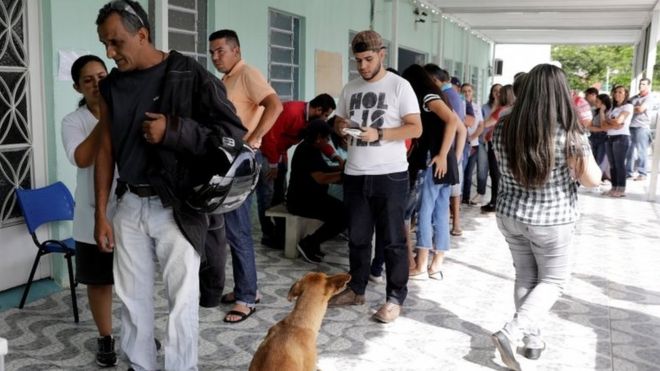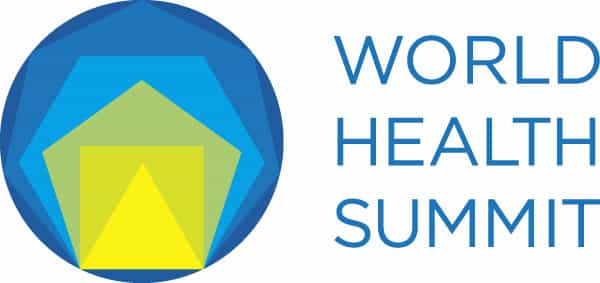Building health resilience in a fast-changing climate
By Mashida Rashid
When I visited my hometown of Dhaka last September I was shocked. Many of my family and friends were writhing from a mysterious new disease that no one really knew. In my ten years as a public health specialist, I had worked in health systems approaches to malaria, dengue, and other vector borne diseases in Bangladesh, but this was a new one for me. The joint pain that accompanied the fever could stay for months afterwards, and was debilitating. It left previously healthy people hobbling on walking sticks, and apparently there was no cure. The only practical advice was to avoid being bitten by mosquitoes.
So, when ‘Chikunguniya’ was mentioned again at the Prince Mahidol Award Conference in Bangkok — one of the world’s premier public health meets — during a session on climate change and emerging diseases I listened intently.
The name Chikunguniya originates from Tanzania, meaning ‘to become contorted’, describing the stooped appearance of the person who contracts this disease; an apt description of what I had seen in Dhaka.
At the session, organized by the United Nations Development Programme (UNDP), the case study presented was from the mountains of Bhutan. The contrast struck me — geographically the region, at 2000m above sea level, is the very opposite of deltaic, flat land Bangladesh.
Whereas Dhaka’s latest Chikunguniya outbreak comes in the heels of the wettest monsoon in 35 years, this vector-borne disease hadn’t previously made an appearance in the Himalayan range because of its temperate climate. As far away as Italy, a Chikunguniya outbreak followed one of the driest summers in years.
This then is the crux of it: climate change over the years has changed the nature of infectious diseases both spatially and temporally. Diseases are spreading in new and unpredictable ways, and at surprising rates, leaving scientists and policy-makers grappling to understand their etiology and the ramifications.
Several recommendations emerged from the session, as ways to ensure preparedness and build resilience among at-risk communities. Evidence from complex, long-term research has paved the way for modeling, and risk predictions, but there needs to be a thrust on translating that research into practical, actionable policy, and communication of those policies in effective language.
Policy makers not only have to take into account health as a driver, but other non-health sectors such as tourism, transport, and urbanization, in a real effort to understand these complexities.
Integrated, coordinated, multi-sectoral systems responses are what can prevent an outbreak from reaching epidemic proportions.
With advances in data integration and technological innovations, surveillance systems and early warning systems are becoming more sophisticated. This allows for preparedness, which goes a long way in prevention. For example, in 2011 in Singapore there was a three-month advance warning for the next outbreak of dengue: the early warning meant pregnant mothers had three months to prepare themselves for mosquito season, and could ward off potentially life threatening situations. This model, with the right planning, can be replicated for other infectious diseases.
The Building Resilience of Health Systems in Asian Least Developed Countries to Climate Change project, supported by UNDP and the World Health Organization (WHO) with funding from GEF, is strengthening institutional capacities in six Asia Pacific countries to integrate climate risks into health sector planning, improve surveillance and early warning systems, and integrate health into the national adaptation planning processes, among others.
Building resilience to shocks is a step-by-step process. At national levels, it involves providing data to inform government and decision-makers, sharing economic cases that highlight where a country’s finances can deliver the best development gains, and tailoring health systems so that during times of outbreaks, there are well-established processes in place.
At community levels, health resilience requires us to better understand behaviour, adaptive capacity and vulnerabilities. Ultimately, our actions need to empower people, so that they can take stewardship of their future, and be prepared for environmental or health calamities, or both.
source: https://reliefweb.int/


 The Brazilian state of Sao Paulo, the country's most populous, is at risk of yellow fever, the World Health Organization (WHO) is warning.
The Brazilian state of Sao Paulo, the country's most populous, is at risk of yellow fever, the World Health Organization (WHO) is warning. "Gaming disorder" will be recognized as a disease later this year following expert consensus over the addictive risks associated with playing electronic games, the World Health Organization said Friday.
"Gaming disorder" will be recognized as a disease later this year following expert consensus over the addictive risks associated with playing electronic games, the World Health Organization said Friday. Representatives from Cambodia, China, the Lao People’s Democratic Republic, Myanmar, Thailand and Viet Nam today called for accelerated action to eliminate malaria in the Greater Mekong Subregion (GMS) by the year 2030. The call comes amid concern over resistance of malaria parasites to antimalarial drugs, including artemisinin—the core compound of the best available antimalarial medicines. To date, resistance has been detected in five of the six GMS countries. The best way to address the threat posed by drug resistance is to eliminate malaria altogether from the countries of the Mekong.
Representatives from Cambodia, China, the Lao People’s Democratic Republic, Myanmar, Thailand and Viet Nam today called for accelerated action to eliminate malaria in the Greater Mekong Subregion (GMS) by the year 2030. The call comes amid concern over resistance of malaria parasites to antimalarial drugs, including artemisinin—the core compound of the best available antimalarial medicines. To date, resistance has been detected in five of the six GMS countries. The best way to address the threat posed by drug resistance is to eliminate malaria altogether from the countries of the Mekong.
 The burning issue at this year’s World Health Summit in Berlin was health security. At this 8th WHS it was clearer than ever that the walls between the traditional disciplines of ‘global health’ and (European) ‘public health’ are rapidly coming down, with health threats anywhere in the world becoming a domestic challenge as well as an international development issue. The topics driving the agenda in Berlin are increasingly preoccupying European Heads of State as well as their G7 and G20 counterparts. It is a welcome signal that the patrons of the WHS, Chancellor Merkel and European Commission President Juncker, are joined by France’s President Macron. Nevertheless, in a blistering keynote speech MSF International President Joanne Liu challenged the mostly-European audience to protect health wherever and whenever threats arise and not only when they reach our shores.
The burning issue at this year’s World Health Summit in Berlin was health security. At this 8th WHS it was clearer than ever that the walls between the traditional disciplines of ‘global health’ and (European) ‘public health’ are rapidly coming down, with health threats anywhere in the world becoming a domestic challenge as well as an international development issue. The topics driving the agenda in Berlin are increasingly preoccupying European Heads of State as well as their G7 and G20 counterparts. It is a welcome signal that the patrons of the WHS, Chancellor Merkel and European Commission President Juncker, are joined by France’s President Macron. Nevertheless, in a blistering keynote speech MSF International President Joanne Liu challenged the mostly-European audience to protect health wherever and whenever threats arise and not only when they reach our shores.